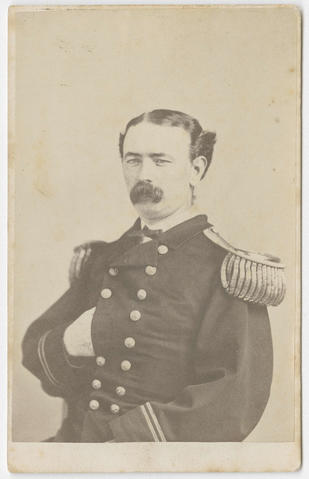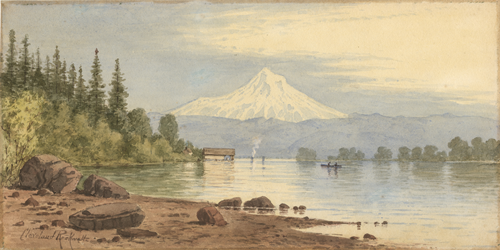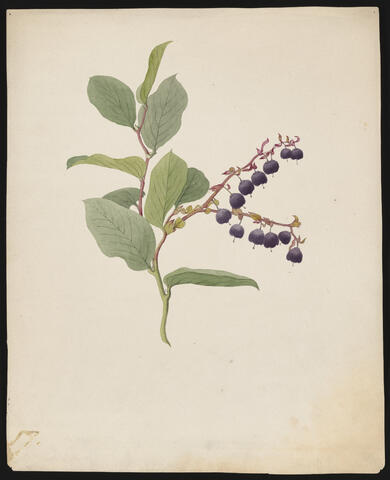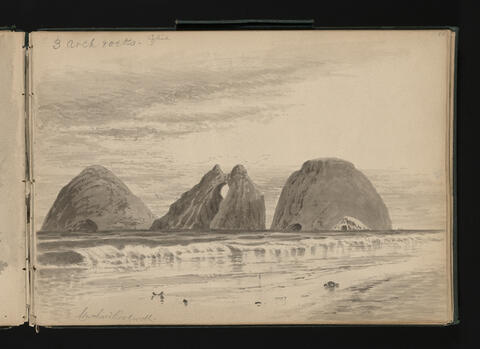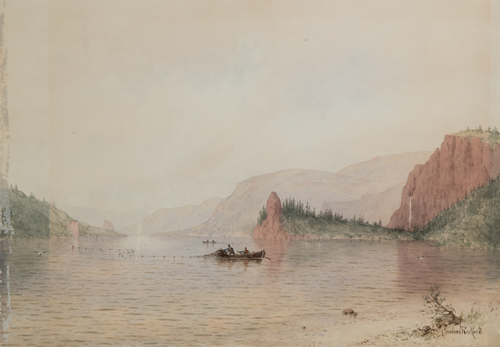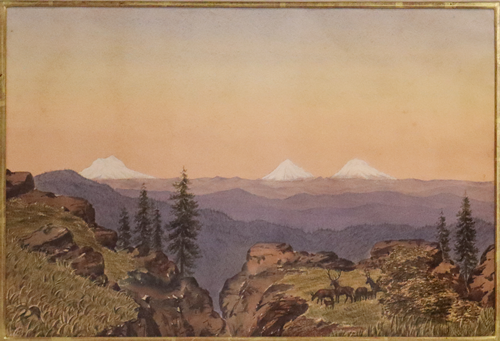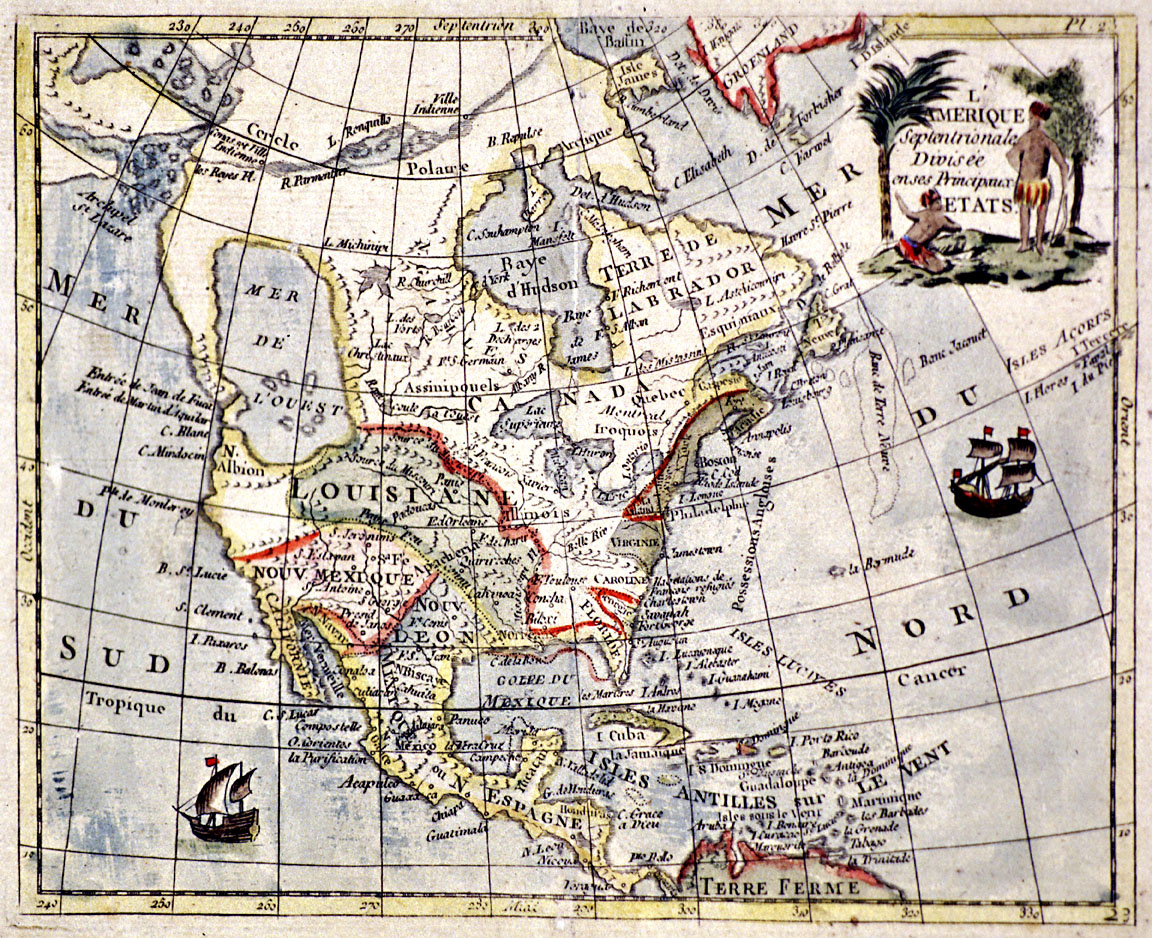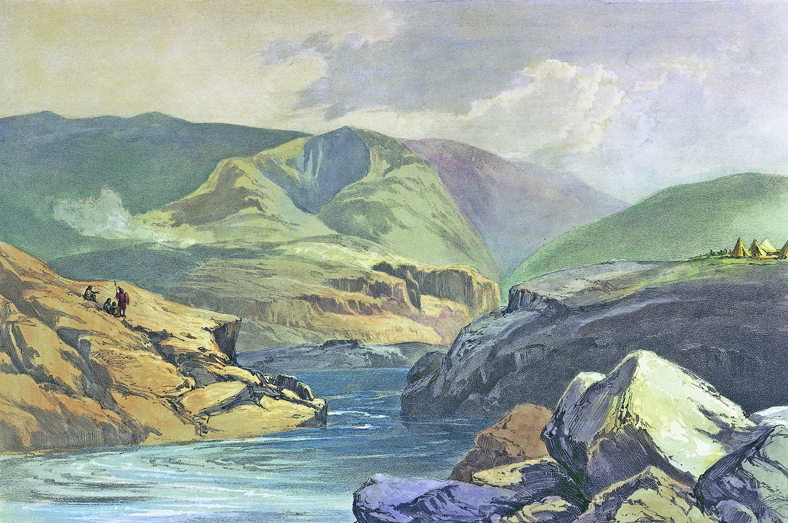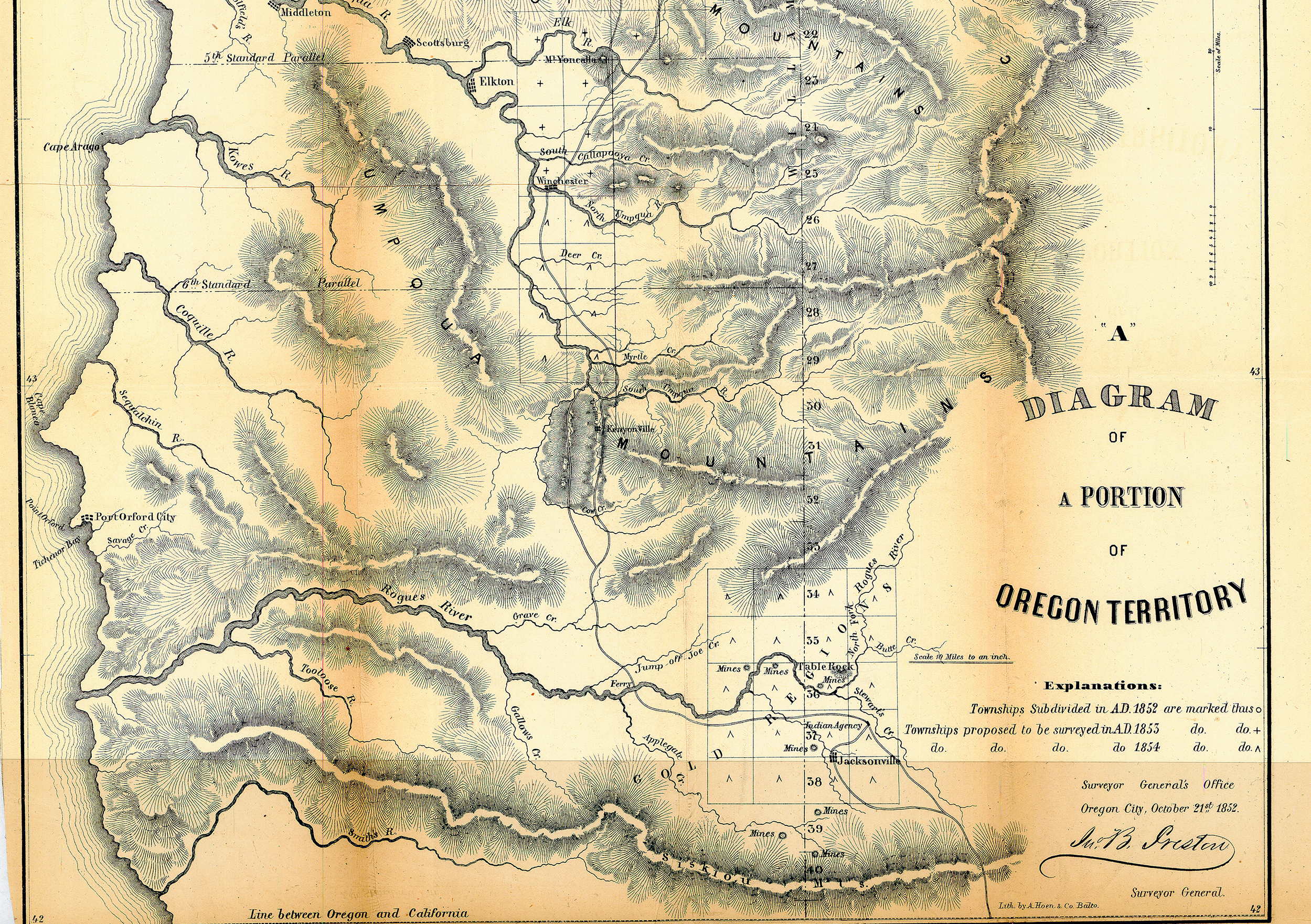Cleveland Rockwell was a topographical engineer, cartographer, and artist who made significant contributions to surveys of the Atlantic and Pacific Coasts in the nineteenth century. His contributions to western art and cartography, including survey work on the Columbia and Willamette Rivers, documented natural wonders in both technical and creative ways. Cornelia Rockwell often joined her husband in the field and contributed to his sketchbooks, which provided a foundation for the artwork he produced later in his career.
Cleveland Salter Rockwell was born to Edward Rockwell and Matilda du Plessis Salter Rockwell in Youngstown, Ohio, on November 24, 1837. He attended Troy Academy, a preparatory school in New York for the Rensselaer Polytechnic Institute, before attending the University of the City of New York in 1856. There is no record of Rockwell having graduated.
In 1856, he took a job with the U.S. Coast and Geodetic Survey, working on projects that included a survey of New York Harbor. The Coast Survey served the Union Army during the Civil War, and Rockwell’s expertise as a topographical engineer and cartographer was in demand. He mapped approaches to the City of Philadelphia and charted strategic regions of the south Atlantic coastline in support of a Union blockade. He also completed maps of the South Carolina and Georgia coastlines in 1862 and was assigned survey and reconnaissance work in 1863 to support the Union in North Carolina, Pennsylvania, Maine, Virginia, and Tennessee. Recognized for his dedication and precision, Rockwell was promoted from aide to sub-assistant in June 1863 and was commissioned Captain of Engineers in December.
After being released from the army in 1865, he joined a Coast Survey project in South America. In 1867, he was promoted to assistant and was transferred to the West Coast, where he did surveys in San Francisco and elsewhere, including at the mouth of the Columbia River. In 1873, Rockwell married Cornelia Fleming Russell, who was born in Nashville, Tennessee, in 1856. The couple reportedly wed on a ferry boat in San Francisco Bay to avoid the ire of her pro-Confederacy family. Cornelia Rockwell often joined her husband in survey camps, traveling with him as he worked. They had two daughters—Gertrude Ellinor (b. 1881) and Cornelia (b. 1882).
The Coast Survey appointed Rockwell chief of the Northwest Section in 1878, and he continued work on the Columbia River. He also surveyed the Willamette River, the Oregon Coast, and California, Alaska, and British Columbia, documenting in his sketchbooks the landscapes he traveled through. In 1891, the Rockwells moved to Albina, which was then a town near Portland on the Willamette. By the time he retired in 1892, Rockwell was nationally known for his survey work, which had helped boost trade and make navigation safer. The Rockwells were socially active in Portland, hosting parties and club events, as well as supporting civic projects such as the Children’s Home and the Humane Society. Cleveland sat on the board of three Portland banks.
Rockwell worked as a civilian consulting engineer after retirement and was hired for projects such as a survey of coal fields at Coos Bay. He increasingly focused on painting. In the field, both of the Rockwells sketched in pencil, finishing many drawings with pen and ink wash. Some of their botanical field sketches were in watercolor, and Cleveland’s finished works included watercolor and oil paintings. The pages bearing Cornelia’s signature are colorful and detailed drawings of flowering plants, which she identified by name and location. Together, the Rockwells documented hundreds of western landscapes and biota.
The sketchbooks included notes about light, shadow, and color, which allowed him to recreate on canvas scenes he had seen in the field. Many of the artworks he became known for, including three landscape scenes engraved on a sterling silver punch set for the Battleship Oregon in 1897, began as sketches in his books. He also painted Alaska landscapes in watercolor and participated in exhibitions at the San Francisco Art Association. He was a founding member of the Portland Art Club in 1885 and president of the Oregon Art Association in 1896.
Cleveland Rockwell died in Portland in 1907. Cornelia Rockwell died in Montana in 1922 and was buried in Portland. Cleveland’s maps and surveys and his and Cornelia’s paintings are considered valuable historical documents, many held in the permanent collections of the Oregon Historical Society, the Columbia River Maritime Museum in Astoria, and the Seattle Art Museum.
-
![]()
Captain Cleveland S. Rockwell, Cartes-de-Visite photograph.
Oregon Historical Society Research Library, Digital Collections, OrgLot500_A_152 -
![]()
"Mt. Hood from Fishers Landing (Portland)," watercolor painting, by Cleveland Rockwell, c.1884.
Oregon Historical Society Museum Collection, 2012-47.3.1,.2 -
![]()
Botanical illustration of Gaultheria shallon (Salal), by Cornelia Rockwell.
Oregon Historical Society Research Library, Digital Collections, Mss2163_F15_002 -
![]()
Gray wash landscape drawing of Three Arch Rocks in Tillamook County in Oregon, by Cleveland Rockwell, c.1887.
Oregon Historical Society Research Library, Digital Collections, Mss2163_F20_031 -
![]()
"Gill Netters Near Rooster Rock," watercolor on paper, by Cleveland Rockwell, 1891.
Oregon Historical Society Museum Collection, 75-1.165 -
![]()
"Mt. Rainier, Mt. St. Helens, Mt. Adams, watercolor landscape painting, by Cleveland Rockwell, 1868.
Oregon Historical Society Museum Collection, 88-70.1,.2
Related Entries
-
![Cartography of Oregon, 1507–1848]()
Cartography of Oregon, 1507–1848
The cartographic history of Oregon as a place in the Pacific Northwest …
-
![Columbia River]()
Columbia River
The River For more than ten millennia, the Columbia River has been the…
-
![Oregon Land Survey, 1851-1855]()
Oregon Land Survey, 1851-1855
In 1850, President Millard Fillmore appointed John B. Preston as Oregon…
Related Historical Records
Map This on the Oregon History WayFinder
The Oregon History Wayfinder is an interactive map that identifies significant places, people, and events in Oregon history.
Further Reading
Stenzel, Franz. Cleveland Rockwell, Scientist and Artist, 1837-1907. Portland: Oregon Historical Society, 1972.
Cleveland Rockwell papers, Mss 2163, Oregon Historical Society Research Library, Portland.
“Cleveland Rockwell (1837-1907).” The Cleveland Rockwell Website. Braarud Fine Art, 2011.

